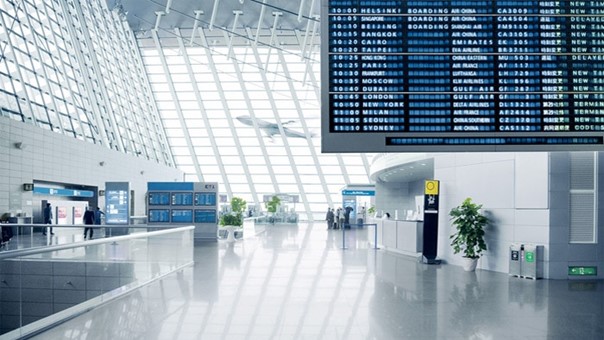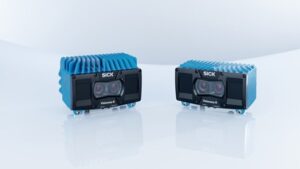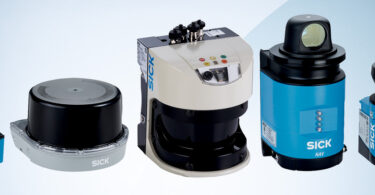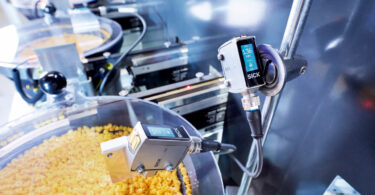Robot marks suspicious air cargo and takes away the freight’s boarding pass utilizing the 3D vision sensor Visionary-S and vision integrator Wu XI Fu Jiang from China
Air freight plays a decisive role in the e-commerce business, which demands the efficient handling of cargo and goods. At Chang Sha Airport in China, robots have recently been put into operation that isolate and mark suspicious freight so it can be ejected from the normal material flow for further investigation downstream. To give the robot the accurate data of where to apply the mark, Visionary-S CX from SICK delivers precise three-dimensional geometric data giving the an airport AMR solution that works for them.
Robot labels suspicious freight
International air freight traffic deals with several challenges – that’s why the flow of freight terminals at airports must be a very efficient process. At Chang Sha Airport in the Chinese region of China Hu Nan, customs authorities are currently revolutionizing the logistical handling of suspicious freight with the aid of a fully automatic robot solution to mark shipments that must undergo a second check following the initial inspection. A completely automated robot unit applies a label so that the material flow system between the customs area and airfield knows which shipments have lost their boarding pass. However, to be able to do this, the robot kinematics must know where the label should be applied from a three-dimensional perspective.
During the process, the label must be attached to the packaging with enough pressure, but not too much to avoid damaging the freight. Things are made even more complicated by the fact that neither the sizing of the freight nor the packaging material are standardized in any way. Every single shipment must be measured three-dimensionally prior to being labeled to calculate a target coordinate for the robot. In this application, it is not possible to limit the travel path of the robot arm using a defined torque due to the different material properties of cardboard packaging, paper envelopes, and padded plastic pouches.
Structured light-powered stereovision provides a better view
The robot unit featuring Visionary-S uses a new solution from SICK as its eyes. The 3D vision camera combines the stereo vision principle with structured illumination. The compact device with enclosure rating IP67 delivers color depth images in real time with its three cameras arranged horizontally in a staggered manner. The structured illumination allows uniform structures to be measured as well. Single-color, uniform surfaces are usually difficult to analyze. Fans of photography will be aware of the problem when a camera’s auto focus shuts off in front of a light or dark wall – at least until the AF assist light, which is also structured, is switched on.
The structured illumination of Visionary-S gives the viewing range its own surface structure, thus generating image scenes that can be reliably measured. The ability to do this is particularly crucial in freight operations because uniform surfaces are the norm due to the consistent structure of cardboard packaging. Due to the integrated IR illumination, Visionary-S works both in total darkness and in strong daylight with an intensity of 40 klx. When it comes to resolution, the system delivers 640 x 512 pixels and takes 30 color and depth images per second, each of which contains more than 320,000 distance and color intensity values.
An expert at handling cargo
The Visionary-S is optimized for working ranges of 0.5 to 2.5 meters, making the camera ideal for handling baggage. Thus, the new automation solution for the Chinese customs authorities at Chang Sha Airport also represents the start of a new era in terms of efficiency when processing cargo.
The system was developed as part of a collaborative project between system integrator Fu Jiang and SICK’s Chinese sales company, with technical support from the company’s headquarters in Waldkirch.
“The precise RGB- and depth information of the 3D camera could be easily adapted and integrated to suit our requirements thanks to the easy-to-use Application-Programming-Interface,” said Mr. Pan from Wu Xi Fu Jiang.
Today, the rugged construction of the robot unit for marking suspicious air freight forms the basis of 24/7 service required at airports. The high level of capability, regardless of the speed of transport belts, is necessary now more than ever considering international trade markets and the growing presence of online sales platforms, especially in Southeast Asia.
Interested in learning more about 3D vision? Contact a SICK representative today!







